- Home
- Simon Kernick
The Hanged Man (Bone Field 2) Page 19
The Hanged Man (Bone Field 2) Read online
Page 19
Which was why Manning was currently lying down in the back of Harry Pheasant’s Lexus, travelling east towards Gretna Green on the A75. He’d spent the first hour of the journey in the boot. Harry had been stopped at a police roadblock and for several terrifying minutes Manning had had to lie there helpless as he listened to the officers questioning his friend. He’d been convinced they were going to search the car and find him, but Harry had answered their questions with cheerfulness and confidence, and they’d let him go.
Now Manning was putting the second part of the plan into action. Having set up a hotmail account on his burner phone, he re-read the email message he’d been working on for the last half hour for about the tenth time. It said everything it needed to say and contained enough relevant information to convince the recipient that it did indeed come from Manning himself.
But Manning was no fool. He knew that the recipient might want to trace his location using his phone, but he’d planned for that. He’d set up a private virtual network on the phone when he’d taken possession of it, which meant that the message would go via an encrypted virtual tunnel, thereby hiding the IP number.
He sat up a little so he could see out of the window. An empty lay-by was coming up a few hundred metres on the left. Manning pressed Send, made sure the message had gone, and switched off the phone.
He asked Harry to pull over, and as the car turned into the lay-by and slowed down, he opened the back door slightly and threw the phone into the long grass.
Ten minutes later they were on the M6 heading south.
Thirty-six
‘Anthea Delbarto, née Redbridge. Aged sixty-four, no criminal record. Owns Wycombe House in Pittonslow.’
Dan handed me an A4 photo fresh off the office printer. It showed an attractive, well-dressed woman with silver hair who’d clearly had a fair bit of work done to her face but who just about managed to carry it off. In the photo she was at some outdoor summer event and had a drink in her hand. She was smiling at the camera, showing a very healthy set of white teeth, and looked worryingly normal.
I looked up at him from my desk. ‘So this is the owner of the house where Tracey Burn stayed. What else have we got on her?’
Dan shrugged. ‘Not a lot. She was married to James Delbarto, a retired businessman fourteen years her senior, who died of a heart attack in 1998. According to his obituary, they were married ten years. No children. I’ve scanned the net and I can’t find anything about her running a shelter for victims of domestic abuse, so it must have been something she did privately.’
‘It probably was,’ I said. ‘The witness I spoke to on the phone, Martha Harvey, said a good few young women had stayed over the years, but that they and Mrs Delbarto kept themselves to themselves, and didn’t socialize in the village. If Lola recommended that Tracey go there, then she must know Mrs Delbarto somehow.’
‘We still don’t know she did recommend that Tracey go there. It’s all still very vague, Ray.’
I raised my eyebrows. ‘Tracey cleaning for Lola is not a coincidence. There’s a connection somewhere. Did you find out who Lola was calling yesterday evening?’
‘No, good point. I’m waiting for the BT rep to call me back. It got a bit lost in all the drama of last night.’
Which was a fair enough point. We’d both been shot at less than twelve hours earlier and however tough you think you are it still leaves you with a sense of real shock. A few inches either side and Ugo’s bullets would have killed us. It was something best not to think about, so I didn’t. Instead, while Dan chased his contact over at BT for the records from the phone box Lola had been at, I looked up the village of Pittonslow on Google Maps. It was twenty miles west of Winchester and about the same distance north of Southampton. It was also at least two hundred miles from the Bone Field farm where Tracey’s remains had been discovered, and a good seventy miles from where she’d been living with her boyfriend in London.
I was looking a second time at the smiling photo of Anthea Delbarto and wondering how a respectable-looking woman in her sixties could possibly be connected to the Bone Field killers when Dan came off the phone.
He looked at me with an inscrutable expression.
I looked back at him. ‘Well?’
‘At 6.43 p.m. yesterday, a call was made from that phone box to a landline number in Hampshire.’ A big grin spread across his face. ‘The number’s registered to Anthea Delbarto.’
Thirty-seven
It had just turned midday when Tina pulled up at a house in the village of Heddingworth. It was a large, bland-looking new-build that looked out of place between two pretty cottages. A white Audi convertible with the top down was parked outside and Tina parked her own car next to it.
Barbara Howard, the daughter of Mary Sinn’s solicitor, had asked Tina to meet her at her home and not the firm’s offices in Market Harborough, so Tina knew whatever she wanted to talk about was going to be something worth hearing.
Tina had already checked Barbara out. Fifty-two years old with a degree in Law from Brunel, she’d worked as a solicitor in London for ten years before returning home and taking over the family business from her father when he retired in 1999. She’d been married for five years in the early 2000s, but it had ended in divorce. There were no children.
Barbara had already opened the door before Tina had a chance to knock on it. She was a tall, thin woman with dark hair and unflattering glasses, dressed in a trouser suit. She gave Tina a surprisingly awkward smile. ‘Thank you for coming here,’ she said in a soft voice. ‘What I have to say isn’t for public consumption.’
‘I guessed that,’ said Tina as they shook hands.
Barbara offered her a drink but Tina declined. She’d already had three coffees today. Any more and she’d be flying.
They went through to a large study at the back of the house that faced on to a paved garden with a view to the back of another big new-build house beyond. It made Tina yearn for France with its open spaces, and opportunities for solitude. Even here, in the English countryside, there were people everywhere, and the journey up on the M1 had been a nightmare.
There was a sleeping cat on one of the chairs and Barbara shooed it away before sitting down. Tina took a seat a few feet away.
‘I think this is what you’re after,’ said Barbara, tapping a hard plastic file on the desk next to her. It looked old and slightly warped. ‘Mary Sinn brought this to my father in 1976, shortly after Brian Foxley’s death. It’s a copy of his report on his investigation into whether her sister Janet’s death was murder, and whether Janet’s husband, Robert Sheridan, was responsible. There are also some photographs. Mrs Sinn had a number of specific instructions regarding the report. Firstly, my father was not to view the contents or tell anyone else about it. Secondly, he was to store it somewhere very safe, not in his office or house. Apparently, she didn’t consider either secure enough. Thirdly, if anything happened to her – or if she died suddenly, in suspicious circumstances – then he was to take the file to the most senior ranking police officer he could find and remain with him or her while they reviewed its contents. As you probably know, Mrs Sinn died of an overdose in 1992, and my father believed there were no suspicious circumstances, therefore the contents shouldn’t be made public.’
Tina was surprised that Mary’s suicide hadn’t constituted suspicious circumstances in John Howard’s eyes, but she let it go.
‘But your father didn’t follow the instructions to the letter, did he?’ she asked. ‘He told you about it.’
Barbara nodded. ‘That’s right. In 1991, over a year after Kitty Sinn went missing, Mary came to see my father. She was certain by then that her daughter was dead, and that she’d been murdered. She was also convinced that her former brother-in-law, Robert Sheridan, and his children, Alastair and Lola, were somehow involved in the killing, although she was unable to give any evidence to support this theory. Given that Kitty had gone missing in Thailand, my father was convinced she was wrong.
&nb
sp; ‘Mary wanted to release this file to the press – mostly, my father thought, to ruin her brother-in-law and drive a wedge between him and his children. That was when my father read its contents for the first time. When he’d finished, he advised Mary not to publicize it.’
‘Why?’ asked Tina.
‘Because nothing in there was evidence, either that Janet’s death was murder or that Robert was responsible. It wouldn’t have stood up for one minute in a court of law and Mary risked being sued for slander if she repeated any of the allegations made in the report. My father was also concerned for Mary’s safety. He too believed that Brian Foxley had been murdered and didn’t want the same to happen to her.’
‘So what did Mary do?’
‘I never met her, but apparently she was not an easy woman. However, my father could be persuasive and he had some influence, having been her solicitor for almost twenty years. He convinced her to let him continue to keep the report under lock and key, and if the situation ever changed and the information in it became relevant to an investigation into Robert Sheridan, it could be released then.
‘As you know, Mary died the next year but my father kept the report even after she was gone. To be honest, I didn’t know anything about it until he was just about to retire. He told me the whole story, gave me the report to read, and let me decide what I wanted to do with it. Frankly, I agreed with his assessment of it. There’s nowhere near enough to bring a case against Robert Sheridan, even if he were still alive. It certainly seems like he was a very unpleasant man, but that’s not actually a crime.’
‘So why have you still got it?’
‘I was intrigued by the disappearance of Kitty Sinn. I wondered what had happened to her and whether it had something to do with what’s here in the file. When her remains were found, I dug it out and re-read everything. I didn’t do anything with it because I wasn’t sure who to show it to, or what relevance it had.’ She looked at Tina carefully from behind the glasses, like a headmistress. ‘And what’s your interest, Miss Boyd? I have to admit, I’ve read about you and your, er, adventures. Obviously you’re a private detective now. So you must be working on behalf of someone.’
‘I’ve been helping the police in a freelance capacity, looking into the background of the Sheridan family,’ Tina replied carefully.
Barbara raised an eyebrow. ‘I didn’t know the police subcontracted work these days. Austerity must be really biting.’
‘I’m doing it on behalf of one of the detectives.’
‘So they are looking for a family connection behind Kitty’s murder? That sounds like Mary was on the right track after all.’
‘We don’t know that for sure, and the fact that I’m the one here tells you it’s not high on the police agenda.’
‘But they’re not getting any closer to establishing how Kitty’s remains ended up in a school in Buckinghamshire, are they?’
‘Not as far as I know,’ Tina lied. She and Ray had solved the mystery with the help of Charlotte Curtis. Unfortunately, they didn’t have a shred of proof to back it up.
‘I know that Alastair and Lola Sheridan inherited a lot of money when their grandmother died,’ Barbara continued, ‘a good part of which would have been Kitty’s, so they definitely had the motive for murder. And Alastair’s definitely done very well for himself since, which is actually quite impressive after the upbringing he and his sister had.’
‘Do you think Robert Sheridan killed his wife?’
Barbara allowed herself a small smile. ‘Speaking with my non-legal hat on, yes.’
Tina nodded slowly. ‘Do you mind me looking at Brian Foxley’s file?’
‘There’s no point preventing you. Mary’s dead now.’
And that was the sad thing, thought Tina. All of these people – Mary, Kitty, even Robert – were dead, yet their actions, and the fates that had befallen them, were still having a major impact on the lives of so many others.
She took the file that Barbara handed her and started reading.
Thirty-eight
The file that Brian Foxley had prepared for Mary Sinn contained three typed progress reports, each dated approximately a month apart, between June and August 1976. The last one had been compiled only eight days before he’d been found dead.
The paper was yellowing and faded with age but everything was still legible.
The first report summarized Mary’s suspicions, as told to Foxley. She believed her sister had been murdered by her husband for her money. Each sister had inherited a £200,000 cash payment on her twenty-first birthday, paid out from a family trust set up by her father’s estate. In 1960, when Janet had received hers, this was a huge sum of money, making her a very wealthy young woman. Mary and Janet were also paid a further £10,000 per annum for life starting on their twenty-fifth birthdays, so whichever way you chose to look at it, they were both very good catches. Mary had married an insurance broker called John Sinn, and in 1966 Janet had married Robert Sheridan, a self-proclaimed artist who was also involved in the antiques trade. Sheridan, it seemed, had no money of his own and was seen as something of an idle charmer by members of Janet’s family. However, the marriage lasted nine years, until Janet’s death in 1975, and they’d had two children, Alastair and Lola.
As mentioned by Ken Wignall, Foxley had travelled to the spot where Janet had died in the car accident in Italy, and had spoken to investigating police officers and locals. According to his report, they believed that her death had been an accident, although one local woman claimed to have seen a stranger driving in the area around the time she’d died.
The tone of that first report didn’t make encouraging reading for anyone thinking Janet’s death was murder, and it was clear that Foxley was just covering the bases.
The tone changed in the second report as Foxley dug deeper into Robert Sheridan’s background. It appeared that not only was Sheridan an inveterate gambler who’d been bailed out by his wife at least twice in the year before her death, but in the months after the accident he’d travelled to London regularly to stay in hotels and gamble in casinos, leaving his children with the new nanny he’d hired. He seemed to have a group of London friends he spent time with. Foxley identified several of them, but the one that caught Tina’s eye was Volkan Kalaman, a man Foxley described as ‘a senior figure in the London underworld with interests in gambling, prostitution and the importation of illegal drugs’. An attached photo showed the two men laughing together in the street. Volkan was hard-faced and broad-shouldered, and a good six inches shorter than Robert who, Tina had to admit, was a remarkably handsome man with a lean, angular face and a full head of wavy dark hair worn long. In the photo, Sheridan was wearing a shirt and tie covered by a long coat which, unusually for the mid-seventies, seemed to fit him perfectly, and he had the look of a real charmer. He didn’t look much like a grieving husband, and Foxley’s tone in the report was both disapproving and concerned, but there was still nothing that suggested Sheridan might be a killer.
It was the third report in which things became interesting. Foxley was convinced that Sheridan and the nanny were having an affair, and felt that if he could get photos of them together then it might be enough to get the British police to look more closely at Janet Sheridan’s death. So, on the night of Saturday, 14 August 1976, he’d taken up surveillance on the family home, knowing that Sheridan had dropped his children off with their grandmother earlier in the day.
What he witnessed that night changed everything.
I arrived at eight p.m. and concealed myself in woodland, next to the house. I knew both RS and AR were in residence because I saw both of them at various times inside the house, but not together. I then logged three cars arriving at 20.37, 20.49 and 20.58. The first contained an unidentified couple; as did the second. The third contained an unidentified male, who brought with him two cages, each containing a cat. When all the visitors were inside, the curtains were drawn in every room in the house and the windows closed which I thought was odd as it w
as a very warm night. I took all the registration numbers on the cars and also ventured close to the house to see if there was any way I could see or hear what was going on inside. Then at 22.50, all the lights were extinguished.
I was curious as to what was going on so I remained on site. At 00.15, lights started coming on in the house again, and then at 00.20 I heard laughter in the back garden. I made my way round to that side of the house, keeping hidden in the undergrowth, and witnessed Robert Sheridan with a female from one of the unidentified couples. The female was naked but appeared to have dirt stains on her face and body. She and Sheridan then had sexual intercourse on the outside patio while drinking from a glass that I thought at the time contained wine. They then went back inside. A few minutes later, the unidentified man who had brought the cats came outside. He was fully dressed and carrying a large plastic bag which he placed in a corner of the patio very close to where I was hiding. After a further thirty minutes of waiting, during which time no one else came outside, I came out of my hiding place and inspected the contents of the bag. Inside were the mutilated remains of the two cats, which I photographed but did not include with this report for fear you would find them too offensive.
I remained on site for a further two hours, during which time none of the guests left, and all the lights were again extinguished. Assuming they were staying the night, I went home but returned at 06.30 in order to photograph them when they did finally leave. This I succeeded in doing and I have enclosed the photographs here along with the names of those I have so far managed to identify. I have not identified the man who brought the cats as the car he was driving was a rental. However, I feel certain I have seen him before in the company of both RS and Volkan Kalaman in London and I will endeavour to find out who he is with the utmost urgency.

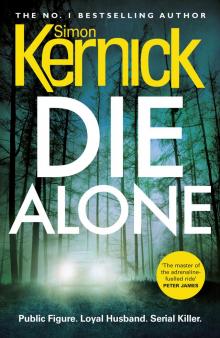 Die Alone
Die Alone Deadline
Deadline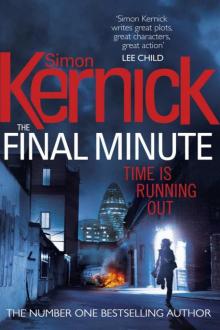 The Final Minute
The Final Minute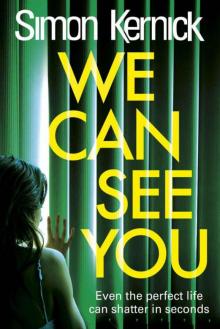 We Can See You
We Can See You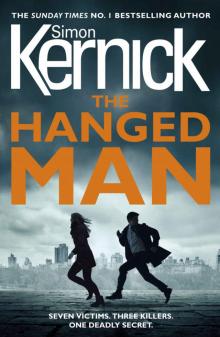 The Hanged Man (Bone Field 2)
The Hanged Man (Bone Field 2)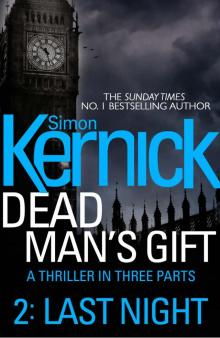 Dead Man's Gift 02 - Last Night
Dead Man's Gift 02 - Last Night Dead Man's Gift and Other Stories
Dead Man's Gift and Other Stories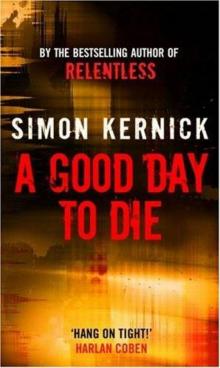 A Good Day To Die
A Good Day To Die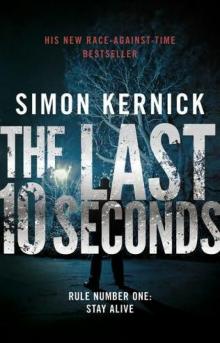 The Last 10 Seconds
The Last 10 Seconds The Murder Exchange
The Murder Exchange The Bone Field
The Bone Field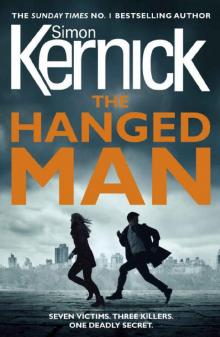 The Hanged Man
The Hanged Man Target
Target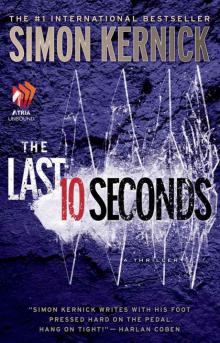 The Last 10 Seconds: A Novel
The Last 10 Seconds: A Novel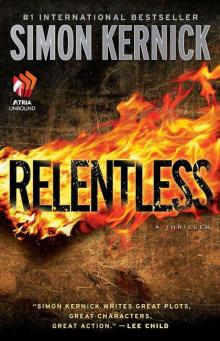 Relentless: A Novel
Relentless: A Novel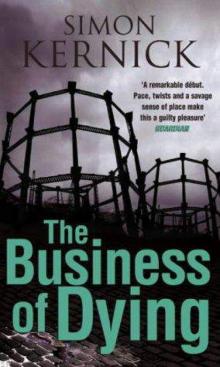 The Business Of Dying
The Business Of Dying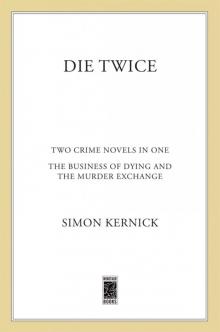 Die Twice
Die Twice Flytrap
Flytrap Stay Alive
Stay Alive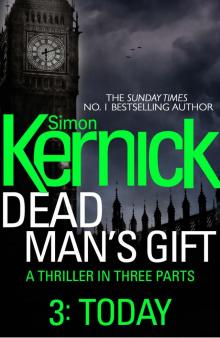 Dead Man's Gift 03 - Today
Dead Man's Gift 03 - Today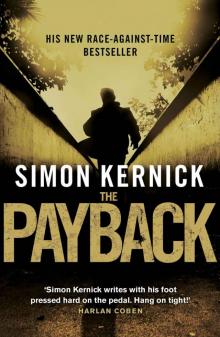 The Payback
The Payback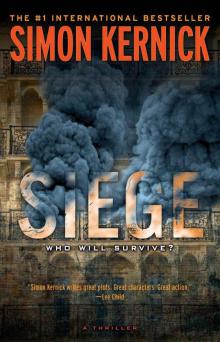 Siege: A Thriller
Siege: A Thriller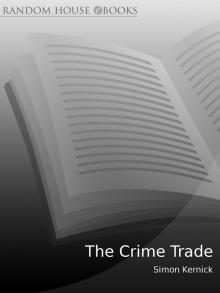 The Crime Trade
The Crime Trade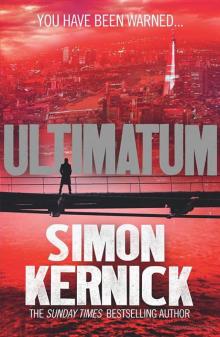 Ultimatum
Ultimatum